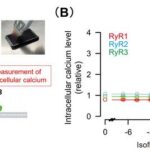
In recent years, phosphorescent materials capable of sustained afterglow emissions at room temperature have captivated scientists and engineers alike, opening new frontiers in optoelectronics and wearable technology. The intrigue lies in their ability to continue emitting light long after the excitation source is removed, a phenomenon that distinguishes them from conventional fluorescent materials. Among these, polymer-based room temperature phosphorescence (RTP) materials have surged to the forefront due to their inherent flexibility, light weight, and tunable optical properties, making them ideal candidates for integration into wearable electronics and advanced display technologies.
A pioneering study led by researchers from China, recently published in the journal Wearable Electronics, marks a significant breakthrough in this domain. The team has engineered novel polymer films that retain bright and colorful phosphorescent afterglows even upon exposure to humid conditions, a notorious challenge that has historically undermined the practical use of phosphorescent materials. The key lies in a multi-component crosslinking strategy that robustly fortifies the polymer matrix against moisture intrusion, thereby preserving its luminescent capabilities with remarkable durability and stability.
Fundamentally, the functionality of phosphorescent materials is deeply intertwined with their molecular environment. In polymer matrices like polyvinyl alcohol (PVA), the dispersion of chromophores capable of triplet state emissions is stabilized predominantly through hydrogen bonding interactions. However, this delicate network is highly susceptible to disruption by ambient moisture, which competes for hydrogen bonding sites, thereby increasing nonradiative decay pathways and accelerating oxygen quenching effects. These processes culminate in a rapid attenuation of the phosphorescent signal, rendering many RTP materials impractical outside controlled environments.
.adsslot_1OvC5wKo6g{width:728px !important;height:90px !important;}
@media(max-width:1199px){ .adsslot_1OvC5wKo6g{width:468px !important;height:60px !important;}
}
@media(max-width:767px){ .adsslot_1OvC5wKo6g{width:320px !important;height:50px !important;}
}
ADVERTISEMENT
The innovative approach embraced by the researchers introduces a chemical crosslinking mechanism under alkaline catalytic conditions, wherein ammonia and boric acid serve as crucial agents. Under these conditions, both the organic chromophores and boric acid molecules engage in covalent bond formation with the hydroxyl groups present on the PVA chains. This intricate network of multi-component crosslinks acts synergistically to create a dense, water-resistant matrix that effectively insulates the phosphorescent centers from moisture, while concurrently suppressing molecular motions that facilitate nonradiative decay. The result is a polymer film that exhibits sustained phosphorescence despite ambient humidity that would typically quench such emissions.
The optical clarity of these films remains exceptionally high even with increased crosslinking density, an attribute that is essential for their deployment in wearable displays and optical security elements where transparency cannot be compromised. This clarity, combined with mechanical flexibility and lightweight character, underscores the tremendous potential of these materials in next-generation flexible electronics. From foldable displays to health-monitoring devices that rely on optical signals, these humidity-resistant RTP polymers offer a versatile platform that can be tailored for diverse functional requirements.
One particularly striking application demonstrated by the team involves anti-counterfeiting labels leveraging spatially selective crosslinking. When exposed to water sprays, the regions of the label lacking crosslinking quickly darkened due to moisture-induced quenching, while the crosslinked areas — emblazoned with phosphorescent text such as “2021 UOP” — remained vividly luminescent for over 20 seconds after the UV excitation was switched off. This visual contrast proves invaluable for authentication processes in security-sensitive industries, illustrating a practical and easily deployable use case.
Moreover, by varying the chemical nature of the chromophores introduced into the polymer system, the researchers achieved a broad palette of persistent luminescence colors. Such tunability allows for customizable optical signatures responsive to different application contexts. The integration of boric acid substituents on these chromophores not only facilitates crosslinking but also fine-tunes the electronic interactions within the polymer network, further optimizing emission lifetimes and intensities.
From a methodological perspective, this study embodies a marriage of chemistry and material science innovation. The employment of alkaline catalytic conditions to enable multi-component crosslinking represents a simple yet elegant solution to a notoriously difficult problem—namely, ambient moisture quenching in RTP systems. The covalent network formed imparts robustness and environmental resilience absent in many existing polymer phosphorescent materials, circumventing the need for complex encapsulation or inert atmosphere processing.
Crucially, the environmental friendliness and operational simplicity of this synthetic approach cannot be overstated. Unlike traditional methods relying on heavy metals or rare-earth elements that pose ecological and health concerns, these polymer-based films harness affordable, benign constituents and straightforward chemical reactions. This paves the way for scalable manufacturing processes conducive to widespread application in commercial wearable electronics, biosensors, and low-energy lighting technologies.
The implications of this work extend beyond wearable electronics, potentially impacting sensor development for environmental monitoring, flexible optoelectronic devices, and smart packaging. The combination of mechanical pliability, transparency, and humidity resistance in RTP polymers positions them for integration into systems where conventional inorganic phosphors fail due to rigidity or moisture sensitivity. Researchers envision that future iterations could marry these polymers with other functional materials to develop multifunctional devices with enhanced responsiveness and durability.
In conclusion, the study presents a groundbreaking yet accessible strategy to overcome one of the most pressing limitations in organic RTP materials—moisture-induced quenching. By engineering multi-component crosslinks via ammonia and boric acid catalysis in PVA-based polymers, the researchers realized humidity-resistant polymer films exhibiting prolonged and vivid phosphorescence. Such advances herald a new era in the design of wearable electronics and luminescent devices, unlocking possibilities for practical, sustainable, and versatile light-emitting materials.
Subject of Research: Not applicable
Article Title: Multi-component crosslinking for humidity-resistant room temperature phosphorescence
Web References: http://dx.doi.org/10.1016/j.wees.2025.04.001
Image Credits: Z. Song, et al.
Keywords
Materials science, Polymer chemistry
Tags: chromophore dispersion in polymerscrosslinking reaction in materialsdurable phosphorescent filmshumidity resistance in polymersmoisture-resistant luminescent materialsmulti-component crosslinking strategyoptoelectronics advancementsphosphorescent materialspolymer matrix stabilitypolymer-based afterglow technologyroom temperature phosphorescencewearable technology innovations


